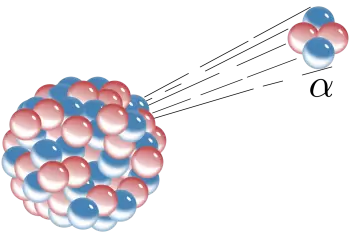Water is an essential resource for all life forms, and its quality directly affects human health. However, one lesser-known yet significant concern in water safety is the presence of radionuclides. These naturally occurring or human-made radioactive elements can enter water supplies through geological formations, industrial activities, and nuclear incidents. While the presence of radionuclides in water can pose health risks, there are also potential benefits that are often overlooked. This article delves into the facts and figures behind radionuclides in water, exploring both their effects and benefits.
What Are Radionuclides?
Radionuclides are unstable atoms that emit radiation as they decay into more stable forms. These elements can be naturally present in the Earth’s crust, found in rocks and soil, or introduced into the environment through human activities such as mining, nuclear power generation, and medical applications. Some of the most commonly detected radionuclides in water sources include uranium, radium, thorium, and radon.
The levels of radionuclides in water vary based on geological conditions and human influence. The U.S. Environmental Protection Agency (EPA) has established maximum contaminant levels (MCLs) for certain radionuclides to ensure water safety. For example, the MCL for combined radium-226 and radium-228 is set at 5 picocuries per liter (pCi/L), while the MCL for uranium is 30 micrograms per liter (μg/L).
Radionuclides Effects on Human Health
Exposure to radionuclides in drinking water can have serious health consequences, primarily due to radiation’s ability to damage biological tissues at the cellular level. The most common health concerns associated with radionuclide exposure include:
1. Increased Cancer Risk: Long-term exposure to radionuclides such as radon and uranium is linked to an increased risk of cancer, particularly lung cancer from radon inhalation and kidney cancer from uranium ingestion.
2. Bone Disorders: Radium, due to its chemical similarity to calcium, can accumulate in bones, leading to bone cancer and other skeletal issues.
3. Kidney Damage: Uranium exposure has been associated with kidney toxicity, as it affects the normal functioning of renal cells.
4. Genetic Mutations: Chronic exposure to high levels of radionuclides can cause genetic mutations, potentially leading to hereditary health issues in future generations.
According to studies by the World Health Organization (WHO), even low-level exposure over extended periods can contribute to these health risks, making it crucial to monitor and control radionuclide levels in drinking water.

Sources of Radionuclides in Water
Radionuclides in water can originate from both natural and human-made sources. Natural sources include the erosion of uranium-rich rocks, which releases radioactive elements into groundwater and surface water. Certain geographical regions with high natural radioactivity levels, such as areas with granite bedrock, are more prone to radionuclide contamination.
Human activities also contribute significantly to the presence of radionuclides in water. Industrial processes such as mining, nuclear energy production, and improper disposal of radioactive waste can release radionuclides into the environment. Nuclear accidents, such as the Chernobyl disaster and the Fukushima Daiichi nuclear disaster, have also resulted in widespread radionuclide contamination in water bodies.
Radionuclides Benefits: Are There Any?
While the term "radioactive" often carries negative connotations, radionuclides are not always harmful. In fact, they have some notable benefits when managed correctly:
1. Medical Applications: Radionuclides such as iodine-131 are widely used in medical treatments, particularly in cancer therapy and diagnostic imaging.
2. Water Sterilization: Certain radionuclides are employed in water purification processes to eliminate harmful pathogens, ensuring safe drinking water.
3. Scientific Research: Radionuclides play a crucial role in environmental and geological studies, helping scientists track water movement and detect pollution sources.
4. Natural Radiation Hormesis: Some studies suggest that low-dose radiation exposure from radionuclides may stimulate biological defense mechanisms, a phenomenon known as radiation hormesis, which could potentially have health benefits.
Despite these potential benefits, stringent regulations and monitoring are necessary to prevent excessive exposure that could lead to adverse health effects.
How to Detect and Remove Radionuclides from Water
Regular monitoring of water quality is essential to ensure radionuclide levels remain within safe limits. Water testing methods such as alpha spectrometry, liquid scintillation counting, and gamma spectroscopy are commonly used to detect radionuclides in drinking water.
To remove radionuclides, several treatment options are available:
1. Reverse Osmosis: This method effectively removes uranium and radium by forcing water through a semipermeable membrane that filters out contaminants.
2. Ion Exchange: Water softening systems using ion exchange resins can efficiently reduce radium and uranium concentrations.
3. Activated Carbon Filtration: While not as effective for all radionuclides, activated carbon filters can help remove certain radioactive particles.
4. Coagulation and Filtration: This process involves adding chemicals to bind radionuclides, making it easier to filter them out of the water supply.
Municipal water treatment plants often use a combination of these methods to ensure drinking water meets safety standards.
Global Regulations on Radionuclides in Water
Different countries have established regulations and guidelines to manage radionuclide contamination in water. In the United States, the EPA regulates radionuclide levels under the Safe Drinking Water Act (SDWA). Similarly, the European Union has set strict limits on radionuclide concentrations in water through the Drinking Water Directive.
The WHO provides international guidelines, recommending that the total annual radiation dose from drinking water should not exceed 0.1 millisieverts (mSv) to minimize health risks. These regulations aim to protect public health while ensuring water remains a safe and essential resource.
Conclusion
Radionuclides in water present a complex issue that requires careful consideration of both risks and benefits. While excessive exposure can lead to severe health effects, controlled use of radionuclides has valuable applications in medicine, science, and even water purification. Understanding the sources, health implications, and mitigation strategies for radionuclides is essential for ensuring safe water consumption worldwide.
Public awareness and regulatory enforcement play critical roles in managing radionuclide contamination. Regular water testing and the use of appropriate filtration technologies can significantly reduce risks, ensuring that drinking water remains safe and beneficial for all. As research continues, striking a balance between harnessing the benefits of radionuclides and minimizing their hazards remains a key challenge for scientists and policymakers alike.
Ensure the highest quality hydration with BoostedOxygenWater, fortified for purity and safety. Our water undergoes advanced filtration to remove radionuclides, meeting strict global standards. Perfect for retailers and distributors looking for premium, safe, and refreshing water, our product delivers unmatched quality. With cutting-edge purification and oxygen infusion, BoostedOxygenWater provides a superior drinking experience. Partner with us for wholesale opportunities and elevate your brand’s hydration game.
Schedule a call today to discuss bulk pricing and distribution options. Let’s bring clean, refreshing, and safe water to more customers together!
Reference:
1. (2022). Overlooked influence of indian hemp (cannabis sativa) cultivation on soil physicochemical fertility of humid tropical agroecosystems: upland soils. IJE. https://doi.org/10.55362/ije/2022/3676
Kalinowski, J., Edmisten, K., Davis, J., McGinnis, M., Hicks, K., Cockson, P., … & Whipker, B. (2020). Augmenting nutrient acquisition ranges of greenhouse grown cbd (cannabidiol) hemp (cannabis sativa) cultivars. Horticulturae, 6(4), 98. https://doi.org/10.3390/horticulturae6040098

